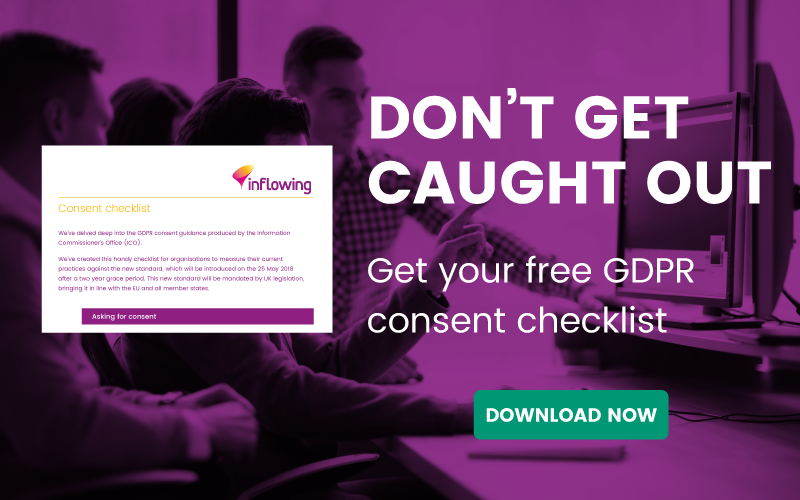But for me, at this late stage in the game, it isn’t really about pre-GDPR and post-GDPR strategy – at this point, they should pretty much be the same thing. The tools and tactics you’re using now to build a list of opted-in contacts before the 25th of May should continue, if not ramp up, after D-Day. Otherwise, what was the point of all that effort?
If you want some more specific guidance on running an accelerated opt-in campaign, Daley has provided a more definitive step-by-step guide here.
Here are my thoughts on why you should look at GDPR as an opportunity to build a holistic strategy which sets the foundations for the future.
Content > Consent
If you’ve read an article about SEO or content marketing in the past 5 years, you’ve probably come across the oft-repeated marketing adage “content is king”.
While it may make many a seasoned content marketer or SEO consultant shudder and cringe as they’ve heard it that many times, it still rings true in a lot of ways.
The first step to getting positive consent from your contacts is to offer them something in return. What are they signing up for? If you took a very optimistic view of the world, you might think to yourself “these people have engaged with my business before – they care about us, and our products, so why wouldn’t they want to keep in touch?” The truth is, people are pretty passive. It takes something to make them take action – it’s the same reason many of us would rather complain about the emails piling up in our inboxes rather than actually find the link and click “unsubscribe”. We use a phrase quite a lot – “make them care” – and it’s so pertinent here. You need to give your users some great content in exchange for their consent. Building out the right content and wider inbound marketing strategy is a more involved process, but we’ve talked about the important themes here and here. Expect a more detailed post on building a content calendar soon.
The second step is caring for this list. There’s no use patting yourself on the back for getting thousands of subscribers pre-GDPR, only to revert back to either sending them the occasional sales email or bombarding them constantly trying to sell them stuff. They’ve trusted you with their consent, you don’t want to abuse that trust. Your content plan should extend well beyond GDPR deadline day and be focused on giving as much value to your opted-in contacts as possible.
There’s a whole world out there
A symptom of the impending legislation is that many businesses are looking internally at their existing list of contacts. It’s highly likely these contacts have been accumulated over the years they’ve been in business, and in most cases, the vast majority, if not all of them, were added as part of the sales process – a lead a tradeshow, a contact for a new account. That means there’s no consent, or at least no trail of consent, for them. So it’s fair enough that these businesses want to keep hold of these thousands of contacts and make sure they can still communicate with them.
But what about everyone else? Yes, focusing on this list of contacts may get you some way there – if you can prove to these people that have engaged with you before that you are worth engaging with again, and staying engaged with, then that’s great. But why not look further afield?
Approaching the idea of consent and opt-in campaigns more holistically, and thinking about how you can get completely new contacts and prospects opted-in down the line is the key to all of this. Sure, you can do your very best to keep hold of the ones you’ve got, but without swimming out into new waters, you can’t expect to experience much growth.
Approach your GDPR campaign with this lens – what can you do now, and what can you continue doing in the future, to keep those contacts that are valuable to you, but also attract new ones? Because in a post-GDPR world, it’s not going to be so easy to get those new ones.
I hope you enjoyed this more opinion-style piece on approaching GDPR. It’s something I’ve been thinking a lot about recently when I wake up randomly at 3am. I’ll be back soon with some actionable advice. But hopefully this has inspired you to think about your “GDPR strategy” a bit differently.
If you would like to discuss how to build an engaged contact list pre and post GDPR in more detail, get in touch.

